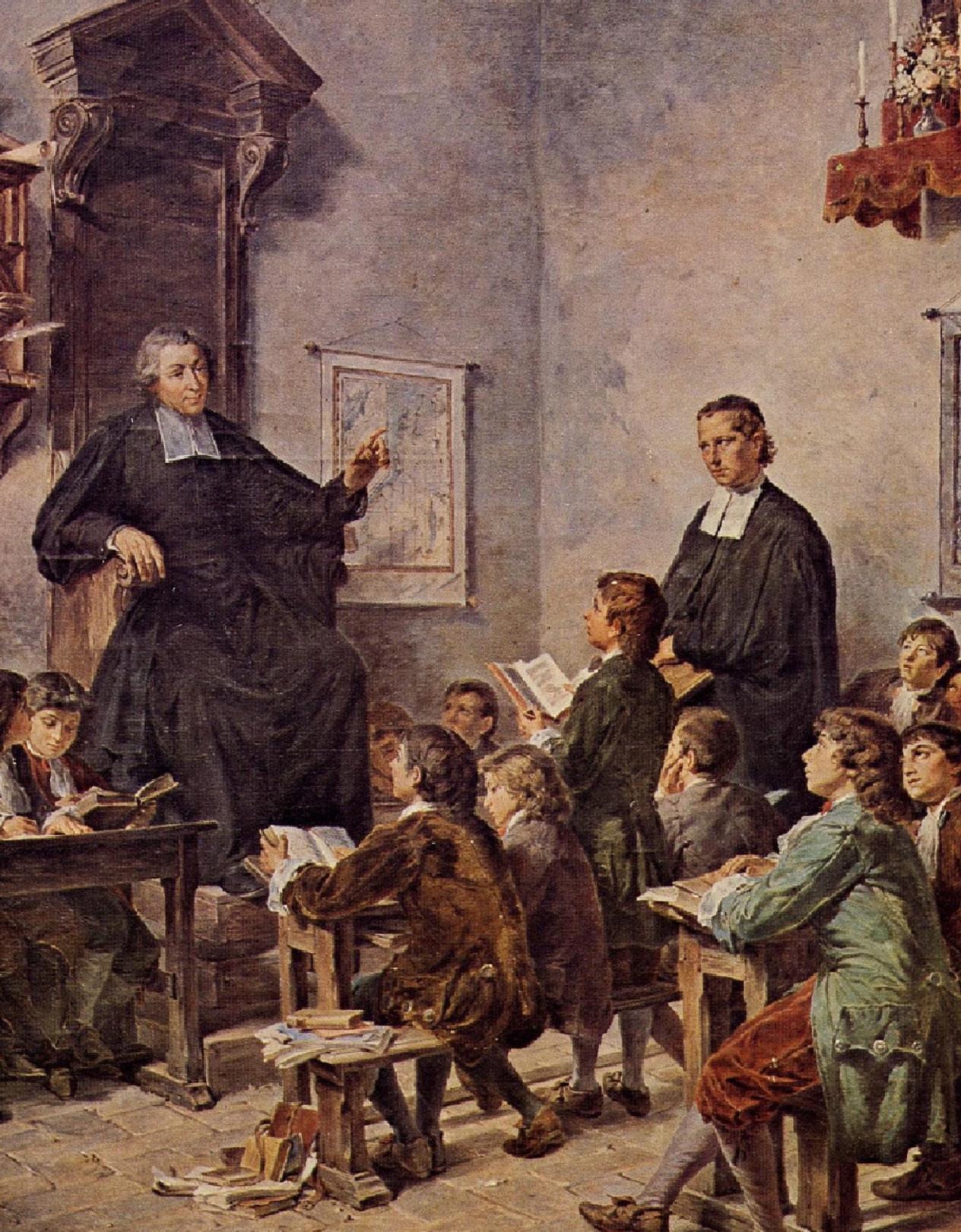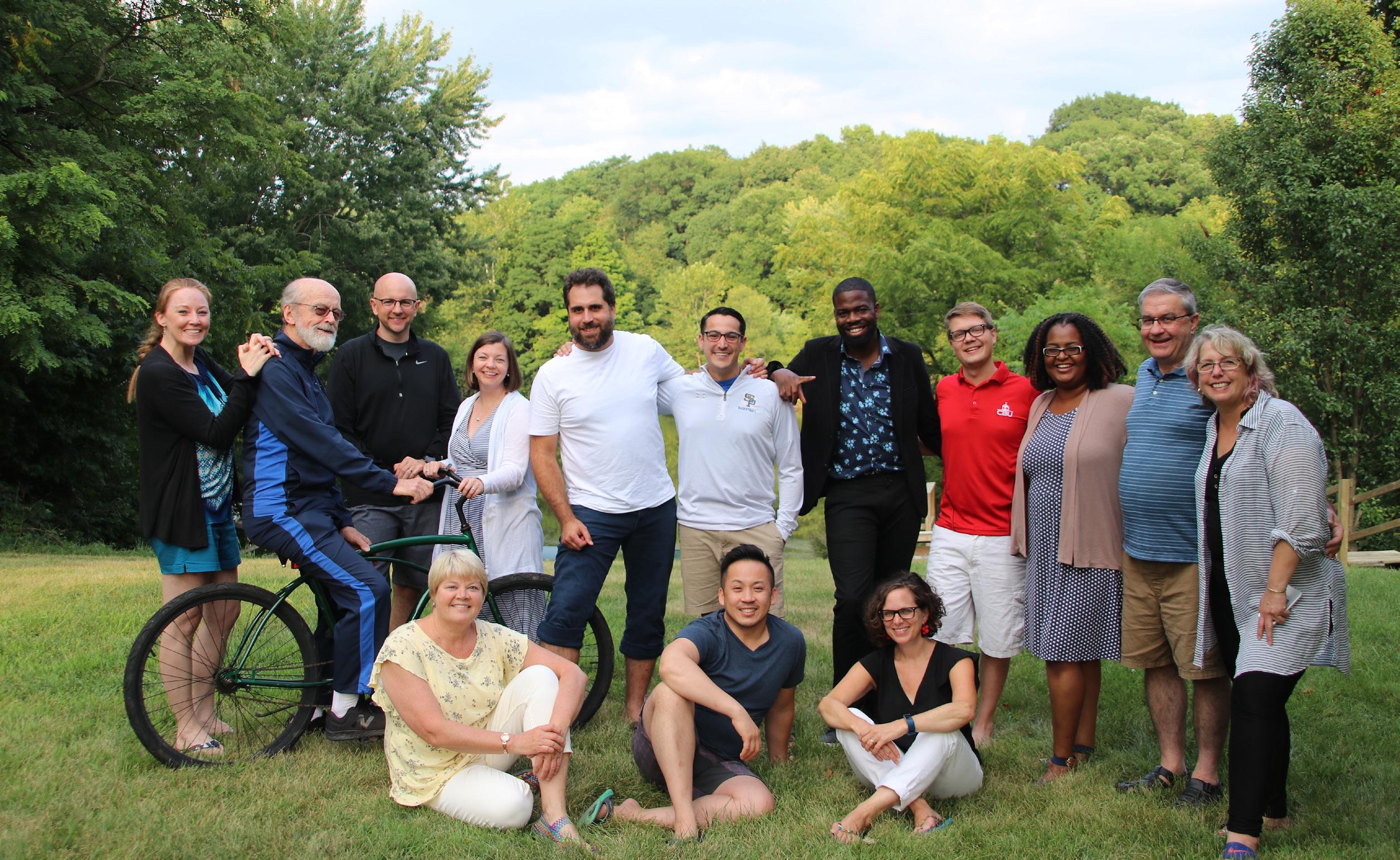
9 minute read
Responding to the Needs of Today
BY ANNA WADDELOVE
AS WE LOOK BACK AT THE MORE THAN 300-YEAR LEGACY STARTED BY SAINT JOHN BAPTIST DE LA SALLE, WE ALSO NEED TO LOOK AT THE PRESENT AND EXAMINE THE SIGNS OF THE TIMES IN OUR CONTEMPORARY WORLD THAT NEED OUR LASALLIAN RESPONSE.
Advertisement
In order to understand how we are responding, we asked Lasallians from across the global family questions relating to young people on the margins, changing demographics, faith formation, the environment, and access and affordability. Through these responses, we are renewing our commitment to the Lasallian mission and looking to the next 300 years.

PHILIPPE BLAIS Animator, Centre Notre-Dame de la Rouge, Grenville-surla-Rouge, Québec, Canada
Courtesy of Centre Notre-Dame de la Rouge

LYNDA DI PROSPERO Vice Principal, De La Salle College "Oaklands," Toronto, Ontario, Canada
Courtesy De La Salle College “Oaklands”

ALISA MACKSEY Executive Director, First Generation Initiative, Saint Mary’s University of Minnesota, Winona
Courtesy Deb Nahrgang

BROTHER CHRIS PATIÑO, FSC Director of Vocation Ministry, District of San Francisco New Orleans, Napa, California
Courtesy Saint Mary's College of California

PETER STEMP Associate Director, De La Salle Solidarietà Internazionale –ONLUS, Institute of the Brothers of the Christian Schools, Rome, Italy
Courtesy Institute of the Brothers of the Christian Schools Communications Service

JOHN VITEK President and Chief Executive Officer, Saint Mary’s Press, Winona, Minnesota
Courtesy Emilie Ng
How do you feel Lasallians are responding to the needs of youth who are intellectually, culturally, socially or physically on the margins?
Peter Stemp: Lasallians respond to the needs of children through an integral education and a participative approach. Educational programs are not limited to ordinary academic courses, rather they are planned to respond to the educational needs of our students, in harmony with the local communities in which we work. For example, in South Sudan, a country battered by civil war, Lasallians are present to bring the hope of a bright future for youth and the community. We are responding to this urgent need by building a new secondary school in the town of Rumbek. Students will develop into educated, responsible and compassionate members of their local communities, who will become active citizens and leaders in forming South Sudan’s future.

La Salle Secondary School in Rumbek, South Sudan, offers a holistic approach which integrates child rights, trauma counseling and relevant education to provide students with sought-after skills.
Courtesy La Salle Secondary School
Philippe Blais: As educators, we want to prepare youngsters to be factors of change in their environment. If we sensitize them to margins around them, we can make a bigger difference than if we try to do it alone. For example, Centre Notre-Dame de la Rouge, a summer camp with a pastoral approach, invited a group of young adults with physical and intellectual disabilities for one day of activities. Our participants of the camp loved this day with them. They played together, discussed together, laughed together. At the end of the day, everybody was happy. The group left the camp with the feeling of being accepted. Our participants felt like they made a difference and learned they can make a difference even outside the camp.

Youth at Centre Notre-Dame de la Rouge host young adults with physical and intellectual disabilities for a day of activities during the 2018 summer camp.
Courtesy Centre Notre-Dame de la Rouge
Why do we, as Lasallians, have a responsibility to help these young people on the margins?
Philippe Blais: Because it is why we exist, it is in our DNA, it is our mission. During John Baptist de La Salle’s time, the people on the margins were the ones with no access to education. Lasallians gave them that education. Then Lasallians provided education to another group on the margin: girls. From our foundation, we take care of and educate those who may be perceived as less important than others. We have climbed so many steps as Lasallians, we cannot just sit down and be happy. What are the next steps to climb to be sure we take care of young people on the margins? I think we do a good job, but the margins are moving and are changing. To give a complete meaningful education, we need to be aware of where those margins are. If we do not try, we are not assigning the same importance to all God’s children … and this would not be Lasallian.
Brother Chris Patiño, FSC: The call to go “beyond borders” from the Center of the Institute and the Church’s own commitment to migrants and refugees, specifically as modeled by Pope Francis, calls us to deepen our commitment to our migrant brothers and sisters. My personal experience with the El Otro Lado program in Tucson, Arizona, (and its recent expansion to El Paso, Texas) is an example of a Lasallian response to these issues. Through an educational immersion program that fosters a culture of encounter, young people and Lasallian educators have the opportunity to better understand the complexity of our immigration system in the U.S. and the lives of those affected.

Students from Cathedral High School in El Paso, Texas, and Justin-Siena High School in Napa, California, participate in the El Otro Lado program in November 2016.
Courtesy Cathedral High School
According to Lasallian Reflection 3, Lasallians Without Limits, one-third of millennials identify as “non-members” of a religion. With so many young people straying from religion, what are Lasallians doing in regards to faith formation?
John Vitek: De La Salle understood young people in the context of their social realities. For us to be effective in our Lasallian education, we must recognize the epochal shift in culture in the United States (and throughout the western world) that is a game-changer in terms of how we think about things like “evangelization” and “religious formation” with young people. For the last 60 years or so we’ve thought about faith as something that is “handed down” from generation to generation. This is an outdated paradigm that doesn’t match up with how people in contemporary culture relate to religion and religious experience. Young people seek connection, purpose and validation of their self-identity. The key thing to understand is that young people “construct” their religious identity, they don’t blindly accept the handing down of a tradition. In fact, they see that as something “being forced on them,” and that is hugely distrusted. So, if people today (especially young people) “construct” their own religious identity from a host of available choices (e.g., yoga practice, CrossFit, the “dinner club,” etc.), how do we as Lasallians come alongside them in the process of construction and what do we have to offer that would be compelling enough for a person to want to incorporate it into their sense of identity? I think there is one huge thing that the Lasallian community does incredibly well and is a reason why the Lasallian schools offer something young people often don’t find elsewhere: As Lasallians, the most important thing we can do for a young person— the most profound impact we can have on a young person’s process of constructing their self-identity —is to know them by name, to know their heart, to know their experiences, and to be present in such a way that they know beyond a shadow of a doubt that we would miss them if they were gone!
Pope Francis said in Laudato Si’ that “care for the environment is a matter of intergenerational justice.” What are Lasallians doing in regards to this care to benefit future generations?
Peter Stemp: Starting from the schools in which we operate, we develop programs to respond to the needs of the local community, promoting a conscious use of resources. We are committed to responding to local needs in a sustainable way: the construction and rebuilding of water supply plants in schools for students and the local community; the progressive introduction of solar energy plants and recycling plants; food sustainability and security programs.

A student participates in class at De La Salle Blackfeet School, a San Miguel-model ministry in the home of the Blackfeet Nation in Browning, Montana.
Courtesy Eric Connolly Photography
How are Lasallians continuing to carry out the founder’s goal to make education accessible and affordable?
Alisa Macksey: Lasallian schools continually look for ways to address this issue. All Lasallian colleges and universities in the United States have some sort of program to make higher education accessible to a broad range of students. For example: the TRiO program (which supports higher education efforts that motivate and prepare underrepresented students on college campuses for academic success and graduation) at Saint Mary’s College of California; the First Generation Initiative (which ensures academic success for high-need, high-potential, first-generation students) at Saint Mary’s University of Minnesota; the Latino Success Program (a program for Latino immigrants to "level the playing field" and make higher education accessible to immigrant students) at Christian Brothers University; and the Summit Program (a rigorous academic preparation program that provides structured support within a challenging academic setting to targeted first-year students) at La Salle University are just a few examples of Lasallian institutions making higher education accessible.
In K-12 institutions, the Miguel-model schools across the country continue to make private Catholic education affordable. They also prepare students for high school and college. All Lasallian secondary schools in the United States provide generous financial aid to high-need students to ensure accessibility and affordability to families.
Brother Chris Patiño, FSC: Through creative partnerships and models, such as the Cristo Rey model and Catalyst Charter schools, along with the ongoing commitment to scholarships and financial aid for families from limited means, the Lasallian mission is seeking to make education accessible and affordable. Additionally, the commitment to the twinning program [which pairs schools in our Region with ministries in Africa] allows Lasallian schools in the U.S. and Canada to support accessibility to education at the international levels as it draws the Lasallian family closer together.

San Miguel High School in Tucson, Arizona, is a Cristo Rey-model school.
Courtesy San Miguel High School
What are some examples of how Lasallians are providing practical and professional education?
Lynda Di Prospero: As we instill the Gospel values of love, service, stewardship and accompaniment, our institutions demonstrate a fervent message of an unbiased, unprejudiced commitment to a rightful education to all youth. A testament to that Lasallian pursuit of affordable education is the fidelity by visionaries to safeguard scholarships, donations, endowments, grants, sponsorships, aids and supports. These allow the continuance of justness in educational opportunities and pursuits by all youth. Evidence of these successes can be recognized in the various Lasallian training programs which include: rehabilitation services, integrational education, service-oriented project work, child care for orphans, professional development workshops, induction programs, women’s educational programs, education and training for sustainable environments. These remarkable examples serve to demonstrate the outstanding commitment to innovative, relevant, practical and professional education.
QUESTIONS FOR REFLECTION
1. What do you see as “signs of the times” Lasallians are/need to be addressing? How do you/ your school community give attention to these areas?
2. What “borders” exist for you personally and in your community that you need to move beyond?
3. A number of creative responses to the pressing needs of today are mentioned. What are creative responses in your community? What new efforts could you support?
Anna Waddelove is the communications specialist for Christian Brothers Conference.








